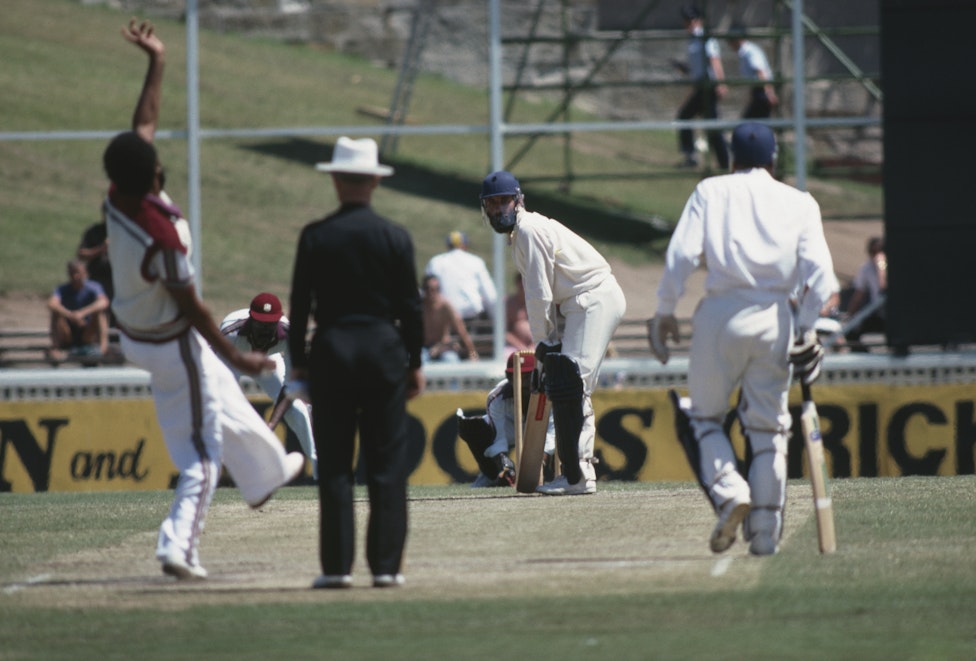 ON THIS DAY
ON THIS DAYThe age-old game of cricket has seen numerous controversial incidents on the field in the past century, many of which have etched themselves in the cricketing folklore. However, only a handful of them could boast of a consequence that changed the game forever.
Whether it be the 1932-33 Bodyline series that ended up limiting the number of bouncers in an over, Dennis Lillee’s use of an aluminium bat which was immediately banned, or Trevor Chappell’s underarm bowling against New Zealand in 1981 that had an identical fate as well, cricket underwent numerous amendments as players kept exploiting loopholes in the rules of the game.
Another such incident took place during the 1979 World Series Cricket or the Benson & Hedges World Series Cup. The tournament had already started on a strenuous note with Kerry Parker strong-arming the world body to play the tournament under floodlights. It was further marred by another incident that left a sour taste for the sport’s guardians and fans alike.
Hosts Australia had kicked off the tournament at the iconic Sydney Cricket Ground (SCG) against the then-cricket giants West Indies in a bid to give the tournament the biggest commercial opening possible. While the star-studded Caribbean side were favourites in any format they played back then, Australia’s five-wicket win in the opening match did add spice to things.
After the Aussies had chased a modest 194-run target very convincingly in 50 overs, West Indies were careful in opting to field against England, whom they were playing the very next day at the same venue. However, what was expected to be a good-spirited competition between two sides captained by Mike Brearley and Clive Lloyd, ended up rewriting history.

Joel Garner and Derick Parry took three and two wickets, respectively, to end England’s knock at 211/8, as Wiley and Graham Dilley remained unbeaten.
Not having Vivian Richards for this clash, West Indies didn’t get the much-needed start as they lost Desmond Hayes for four runs before Gordon Greenidge and Lawrence Rowe steadied the ship. Alvin Kalicharan came at number 3 to forge a crucial 65-run stand alongside Rowe, which seemingly took the game away from England.
Rain interrupted soon, further reducing West Indies’ target from 212 to 199 in 47 overs, with the outcome seemingly beyond doubt now when disaster struck. Rowe’s sudden dismissal sparked a collapse as a rejuvenated Derek Underwood ran through the Caribbean’s middle order by taking away the wickets of Lloyd, Derrick Perry, Andy Roberts and Michael Holding.
An untimely run-out by Kalicharan turned the tables in England’s favour as West Indies were reeling at 186/9 with Colin Croft and Garner standing at the crease. The equation eventually settled to 10 runs needed off the last over with Ian Botham bowling.
Joel Garner hit a boundary and exchanged three singles with Croft, thus reducing the match to three runs required from the last ball for a hard-fought win. However, what could have been a breathtaking conclusion to a tight match ended up being a disappointment as English captain Brearley asked all his players to field at the ropes; even wicketkeeper David Bairstow wasn’t spared.
Croft tried flicking Botham’s delivery to the onside but was bowled in the process, but the unsportsmanlike behaviour did ensue controversy. A year later, Australia started adapting field restrictions during the 1980/81 cricket season, while ICC completely inculcated field restrictions from the 1992 World Cup.
Initially, two fielders were permitted outside the circle for the first 15 overs which got further updated to powerplays, as we know it today. The ICC split powerplays into three sections in 2005, where the bowling side would take two powerplays of five overs each apart from the mandatory restrictions in the first ten overs.
The year 2008 further saw one of the three powerplays being given to the batting side, with modern cricket having many more field restrictions. In ODIs, the current field restrictions stand at two players outside the 30-yard circle for the first ten overs, four fielders for the next thirty overs, and five players for the final ten overs.